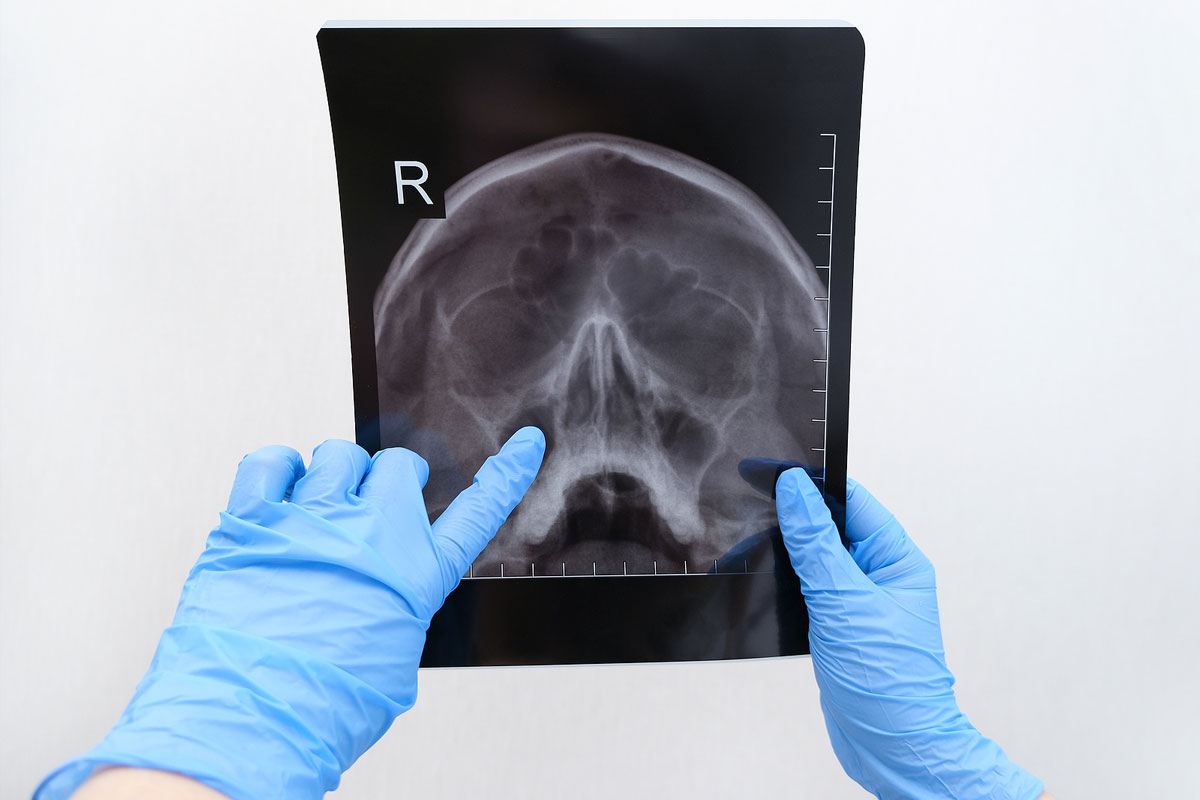Your sinuses are hollow, air-filled cavities in your skull and face which connect through very narrow passageways to the nasal cavity. Most people have four pairs of sinuses:
- Frontal sinuses (in the forehead or above the eyes).
- Sphenoid sinuses (behind and between the eyes).
- Ethmoid sinuses (between the eyes).
- Maxillary sinuses (in the cheeks or below the eyes).
Sinusitis (swelling of the sinuses) is a very common problem affecting 1 in 8 adults each year. The most common symptoms of sinusitis include:
- Sinus pressure, fullness, and headache
- Nasal and sinus congestion
- Discolored mucus and nasal discharge
- Reduced or lost sense of smell
- Post nasal drip
- Fever
- Fatigue

There are many other possible underlying causes for nasal and sinus blockage. Dr. Killian and the team at Treasure Valley Nasal & Sinus Center can discuss these with you and help get to the root of your symptoms.
Treatment for Acute and Chronic Rhinosinusitis
The treatment depends on the underlying cause of your sinusitis.
If you have:
- Bacterial sinusitis: Antibiotics.
- Viral sinusitis: Hydrating, using saline sprays or rinses, oral decongestants, or mucus-thinning agents. Antibiotics, however, do not treat viral sinusitis.
- Fungal sinusitis: Surgery is almost always required to remove the invasive or colonizing fungus, but thorough follow-up care is also essential to prevent repeated infections.
- Allergic rhinitis: We can help diagnose and find specific treatment for your symptoms.
- Nasal polyps: Surgery to remove is a common solution and/or medical management.

When Do You Need Nasal and Sinus Surgery?
Whether you are just beginning to uncover your ENT diagnosis, or you have tried other forms of treatment to no avail, Treasure Valley Nasal & Sinus Center is here to help you take the next step.
Surgery is often not the first step for most common ENT diseases; however, once other options have failed, surgery is a reasonable approach. Modern surgical techniques have drastically reduced invasiveness, complications, and recovery time resulting in better outcomes for our patients.
Functional Endoscopic Sinus Surgery (FESS)
Also abbreviated to “endoscopic sinus surgery” is a minimally invasive surgical procedure that uses a small camera to visualize the nasal and sinus cavities through the nostril. Small and narrow surgical tools can then be inserted through the nostril to remove obstructions and widen airways improving breathing and nasal and sinus drainage. Along with endoscopic sinus surgery, image guided sinus surgery is also used. This is like having a GPS for your facial skeleton that “maps” and marks anatomical landmarks preoperatively that can then be used as a guide intraoperatively. This technique gives surgeons greater accuracy, which minimizes risks and improves patient outcomes.
